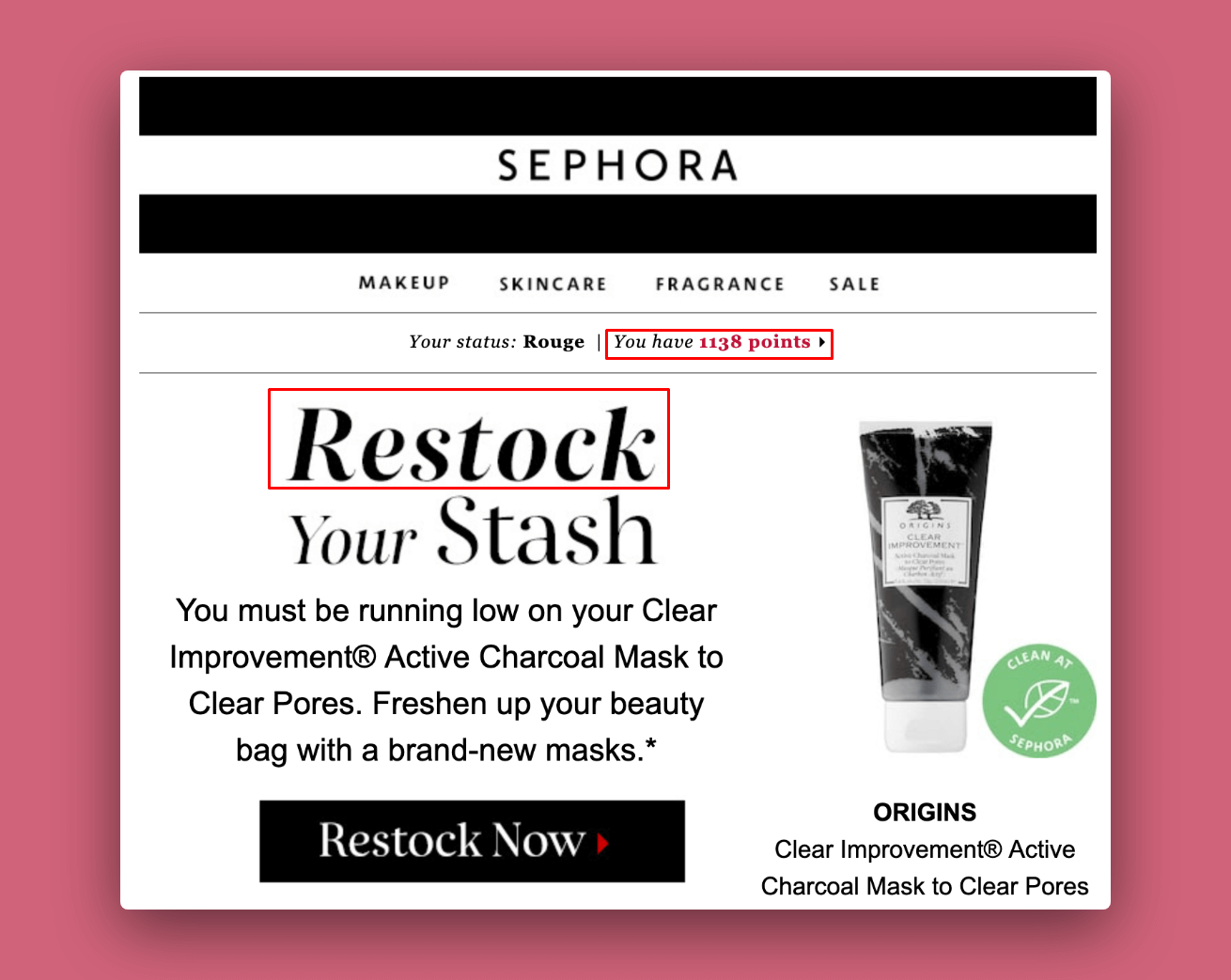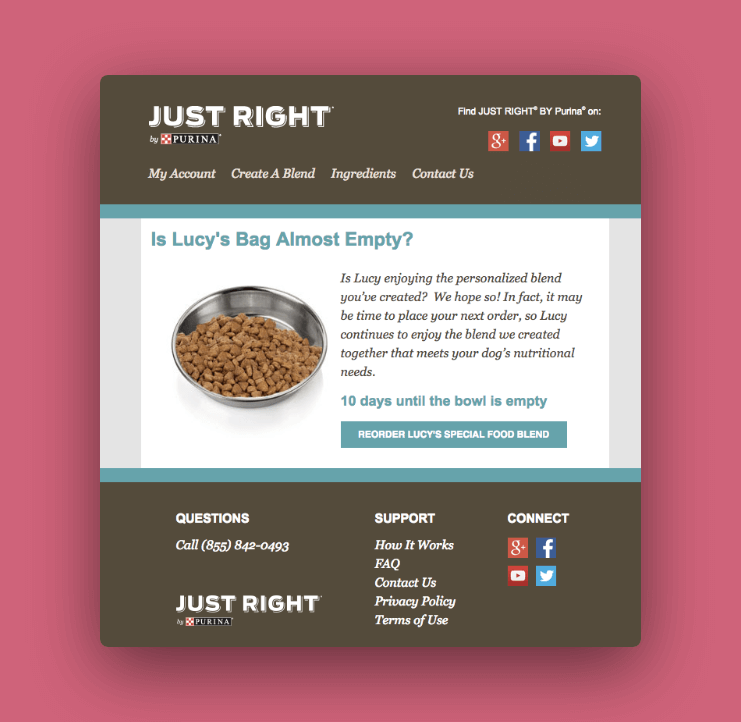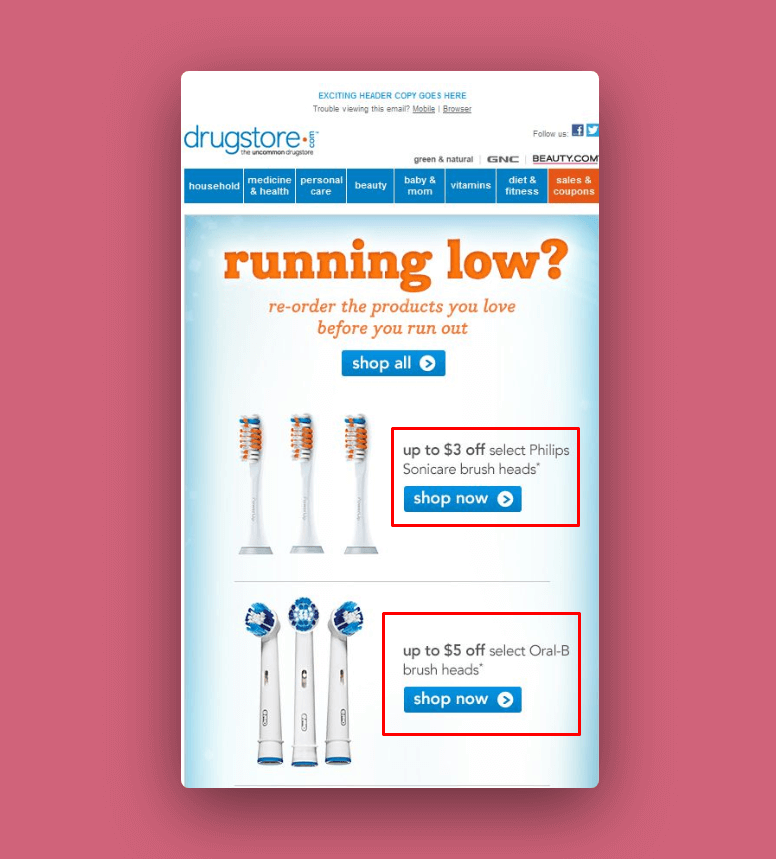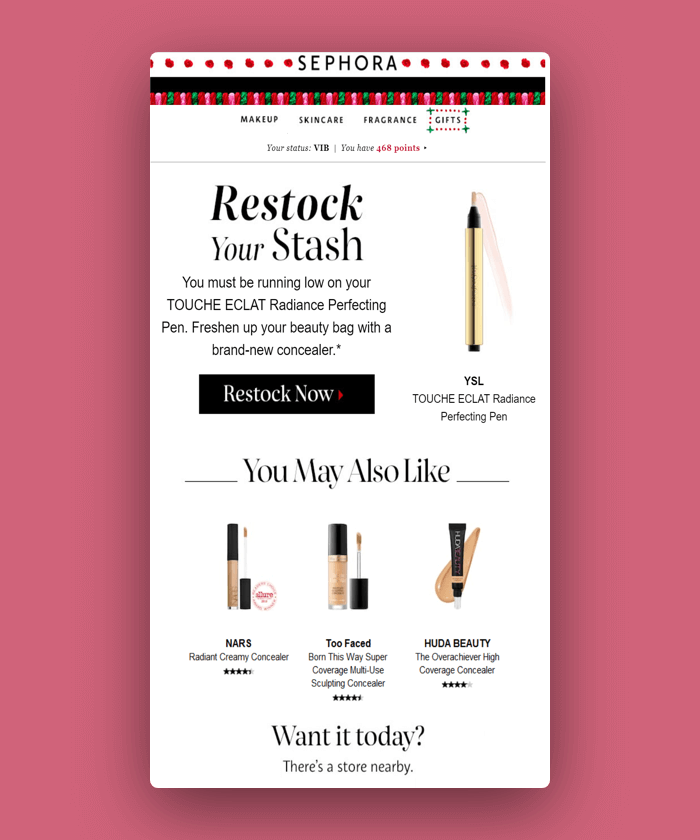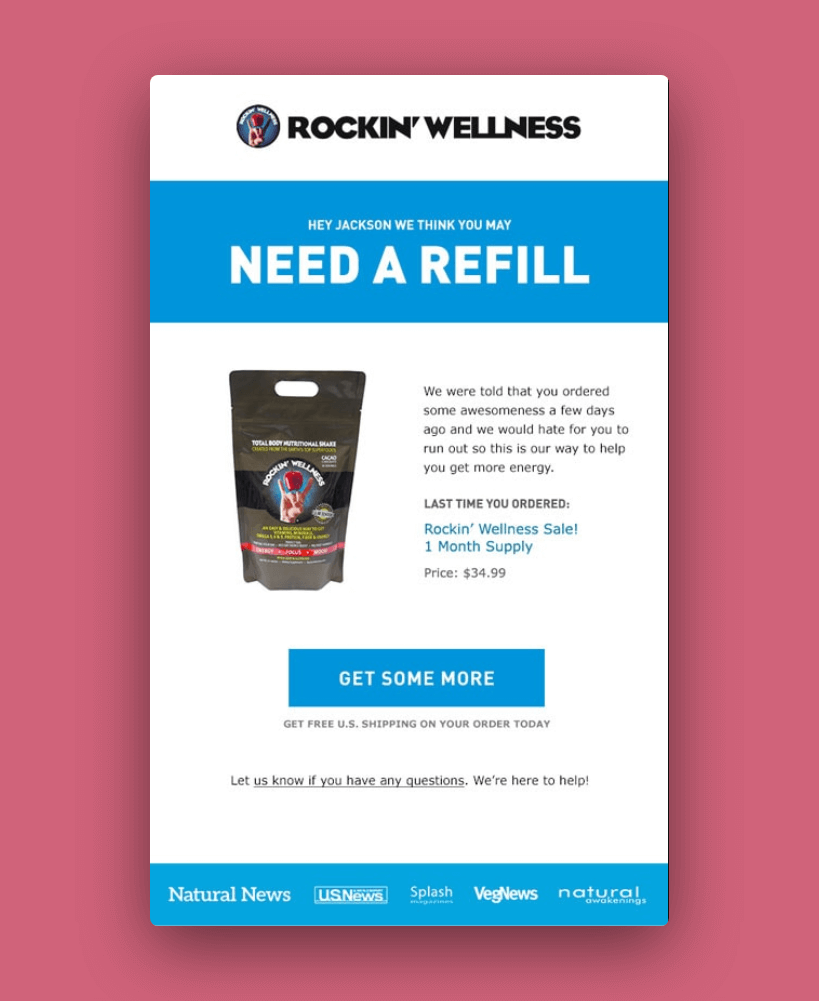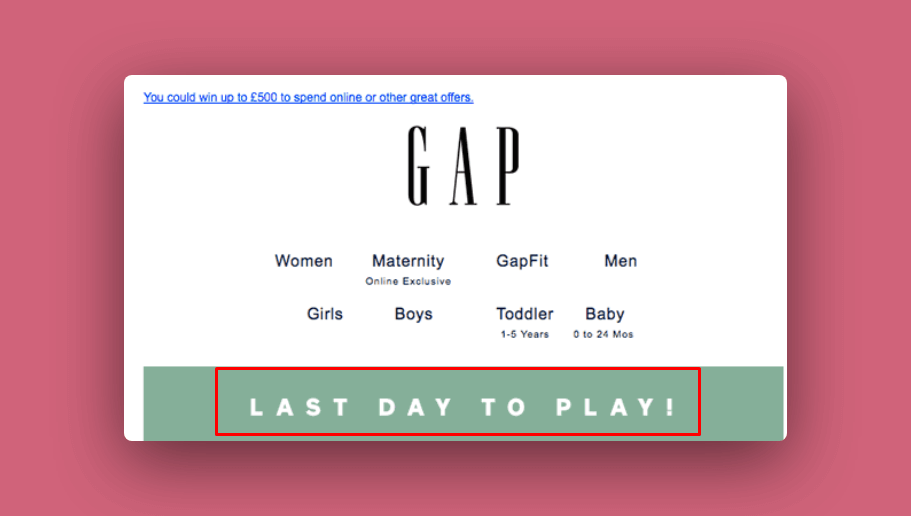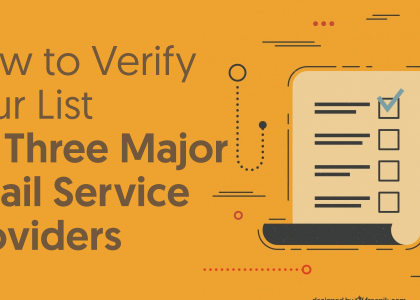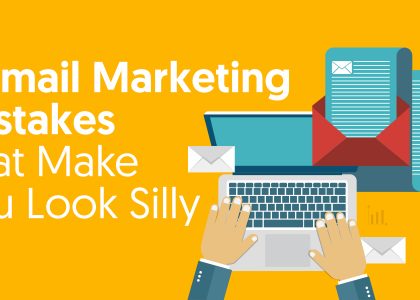Replenishment Emails: An Underrated Email Marketing Technique
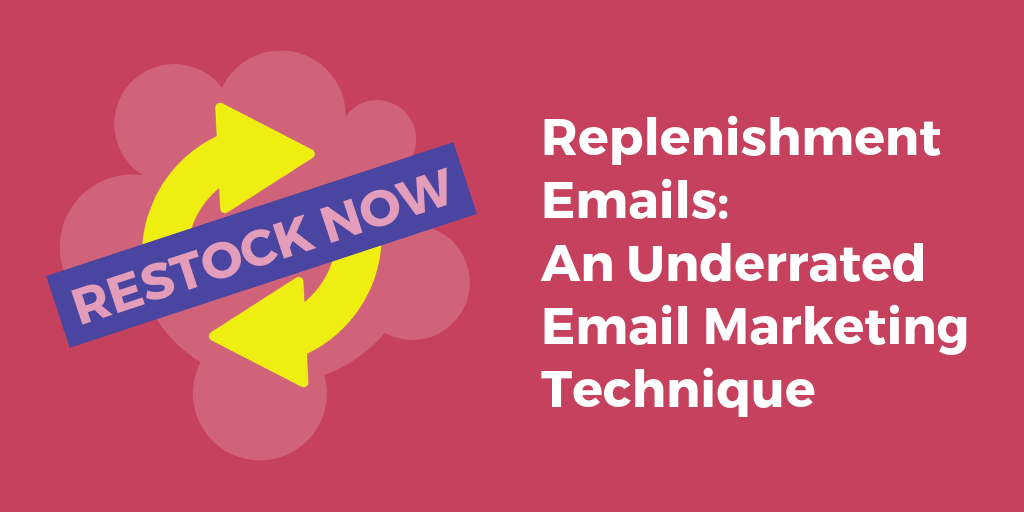
If you’re a marketer in this day and age, you surely know about the power of email marketing and all the different emails a marketer can come up with, to engagement and lead the prospects further down the funnel.
But are you sure you’ve paid attention to all of those emails? Do you know how many different and, honestly, great things you can achieve with triggered emails?
And these go way beyond cart abandonment or even new content you may like. In fact, they are so many of them that some tend to go unnoticed.
Some like the extremely useful replenishment emails!
Recurring orders = recurring customers
Most businesses tend to spend a large amount of their budget on strategies that will get them more new customers, instead of trying to sell to existing ones.
The truth is that said businesses would’ve been able to increase sales just by trying to sell to existing customers first and foremost, as an already existing customer is 5% to 25% less costly than a new one, which makes them more valuable.
Not to mention that this customer is way more likely to convert.
Here is where a replenishment email comes into play and with the use of email marketing software like Moosend and MailChimp you will be on your way to success.
Let us first define what a replenishment email really is:
Replenishment email is an email sent out to remind people to restock on a certain product. It is an email marketing technique used by companies that sell goods that can be replenished (hence the name). The goal is to lead prospects further down the sales funnel and convert them to recurring, and therefore loyal, customers.
In theory, replenishment emails can be sent out only by businesses that can offer some kind of replenishment – some kind of restocking opportunity – that has to do with their products.
The same logic applies to another little marketing trick: Loyalty programs.
Replenishment emails are a lot like loyalty programs, in the sense that they entice prospects to buy, making logical and not impulse (again, in theory) decisions.
Fashion retailers, beauty brands, pet shops, supermarkets, they all offer loyalty programs.
For example, Sephora has its own loyalty program with its own points system that can actually be redeemed in the form of products from Sephora’s own brand.
But Sephora is also using replenishment emails to score sales. Like this:
Notice how the replenishment email doesn’t fail to remind the customer, first and foremost, of their points?
That way, the potential buyer knows the two basic things that the company needs them to remember:
- That they can use their points and save money on their purchase.
- That they are running low on something they have purchased.
So, why not reorder it?
That way, businesses create recurring customers just by taking advantage of their already existing needs.
How it works and why you should do it
Let me begin by stating that replenishment emails can score great open rates, but even better click-through rates. According to a study conducted by Listrak, replenishment emails had an open rate of 10.6%, while they had a click-through rate of 53.6%:
So, this is a reason why you should segment your list and set it to send out replenishment emails. They are always timed to be sent out at the right time. Which means they are always relevant.
But how do they work, exactly?
Businesses have a general idea about the nature of their products and when a customer will, more or less, need to restock on a product.
Therefore, it’s quite easy for them to calculate the time of the purchase and send out the emails in a manner that will seem natural like the customer actually asked to receive one of them.
For example, if a customer buys a specific type of cat food will last them a month, that customer will receive a replenishment email in three weeks. That email will serve as a reminder that the product needs to be repurchased as soon as possible.
Of course, as with everything, content is king here.
A replenishment email will be, by nature, heavily personalized. It can contain reminders on the customer’s previous order, like this one here:
While we can’t be sure whether “Lucy” is the pet’s or the customer’s name, we can be sure of the content we can see here. “Just right” is a project by Purina, that sells personalized dog food.
The pet’s “parent” can create the blend that will be just right (hence the name) for their dog’s needs.
We can see here, that we’ve got a personalized email, full with name and a question that needs to be answered: is the bag almost empty?
There is also a countdown right before the CTA button-the owner has only ten days before the blend runs out, so it creates urgency without even trying too hard.
And then, there is the CTA, which doesn’t go for the hard sell, per se, but gets the point across by pointing out what needs to be done and how unique the product is.
And of course, the company logo is up there where the customer can see it and the brand’s tone is on point, thus not confusing the customer, which is not ideal.
There is a reminder of the customer’s last order, and there are some examples that take it up a notch and actually suggest similar items, sometimes with a nice little discount, even:
And the second example:
The first email gives a discount to the recurring customer, which is always nice, while the second one not only points out the urgency but also suggests similar products or even products that the customer could use to get maximum results.
As you can see, these emails are simple, to-the-point and they convert.
Pro tip: Give your strategies a boost with some eCommerce Marketing Tips!
Things to keep in mind
The fact that they are simple doesn’t mean that creating these emails and figuring out when to send them is an effortless procedure.
1. First in order of business should be list segmentation
Share of respondents who said that they used the following email marketing practices in the United Kingdom (UK) in 2016 to 2018 by Statista
A customer may run out of the product too soon and an ill-timed email won’t do the job it’s meant to do.
You can tackle this problem not only by tracking the customer’s orders but also by asking them to take a small survey after their first order, perhaps in your thank-you email.
This will give you more information and clarity and will definitely help you segment your list better.
You can either calculate the average time between two consecutive orders, always taking into account factors such as the average shelf life of the product or the quantity the customer has ordered, or you can use AI and have it do the work for you.
AI’s work will be more data-driven, more efficient and in the event of the customer ordering for the first time from your brand, AI will be able to extract data from customers with similar demographics and still make the right decisions.
2. Remember that a replenishment email is not in for the hard sell
Rather, it is a reminder that the customer should buy something that they already know and love.
Hard sell tactics usually discourage people from buying. Rather, guide the prospect to see value to your product and remind them what they like about it they should be buying in the first place.
And always keep in mind that recurring customers are never a staple, as everyone has billions of options they could turn to, so you’ll need to keep them coming.
Sending out coupons or special discounts would be a nice idea, especially if the customer hasn’t made a purchase with the original replenishment email you sent out.
3. Personalization is never enough
A personalized subject line is a powerful subject line. Try to include the prospect’s name in that and be as creative as possible.
A mere “Hello John” won’t cut it, when John has a billion email updates in his inbox.
However, asking John if he’s running low on your product or if it’s time to replace the said product? Well, that’s something.
And how about letting them know about something special, something that will make them click on your email, on the preheader text?
4. Create immediate urgency
Remember how we said that replenishment emails are based on logic and not impulse? Well, this is only a general rule of thumb, as the “buy now” aspect -the impulsive nature, that is- of every email should still be there.
Especially if you couple that with a coupon, as a result of the loyalty program we mentioned before. And don’t forget that replenishment emails are an excellent cross-selling opportunity.
5. Types of businesses that send replenishment emails
What kind of businesses can send out replenishment emails?
Well, the answer could be quite obvious, but it’s not that simple as replenishment emails are not just for eCommerce and retail.
Just think: is there any component of your product that can be replaced?
If so, why not try and make these components the basis of your email campaign?
If you are a SaaS company, for example, your replenishment email could be centered around a discount code on a software upgrade or the renewal of the prospect’s subscription-perhaps with more benefits or some special offer, while we’re at it.
Did we get our point across?
From brick-and-mortar shops to Facebook bots, there are too many ways to drive sales in our day and age and a replenishment email is one of the best, most foolproof ways to increase revenue and sales.
Additionally, if you want to take things even further there are tons of other marketing automation techniques you could be using to generate more sales!
After all, a happy customer is more likely to remain a loyal customer.
Have you used replenishment email campaigns? Which were the methods that worked for you? Let us know in the comments!
And please, don’t forget to share the knowledge!

Téa is a content writer working for Writerzone, email marketing software company Moosend and an obsessive writer in general. In her free time, she tries to find new ways to stuff more books in her bookcase and content ideas-and cats to play with.
